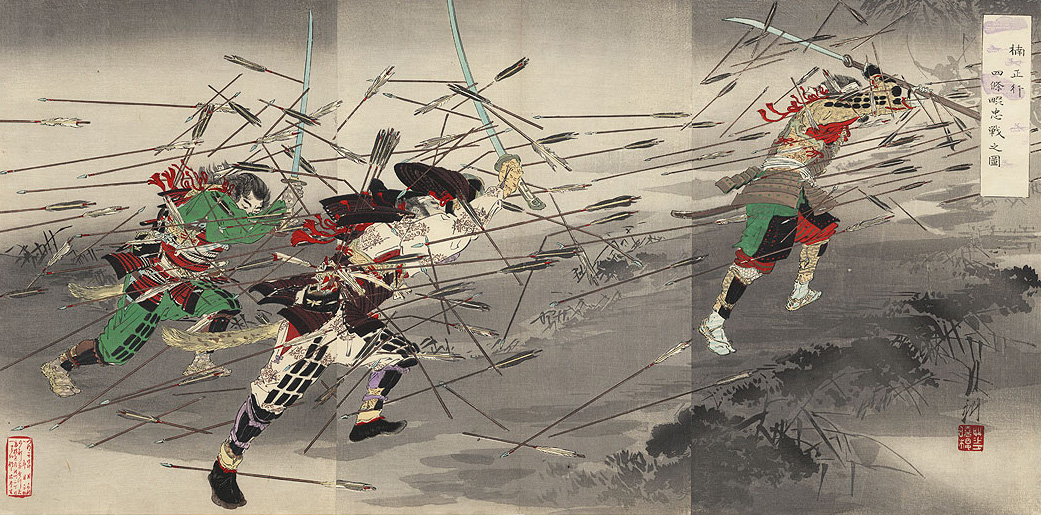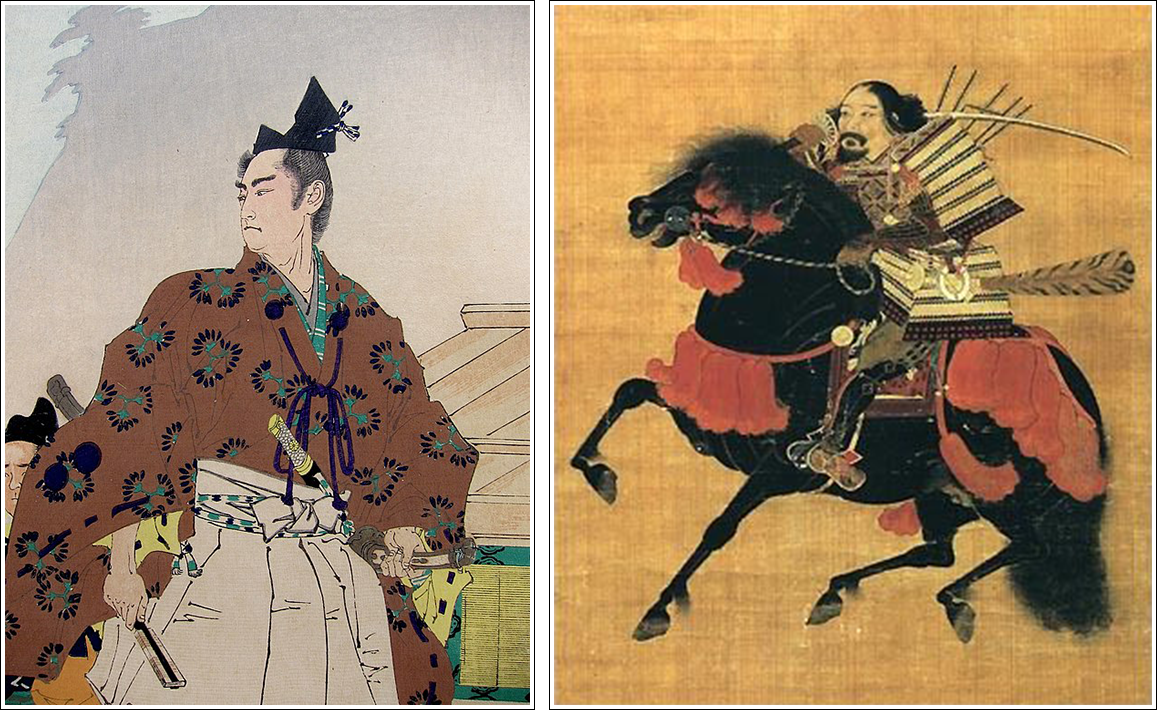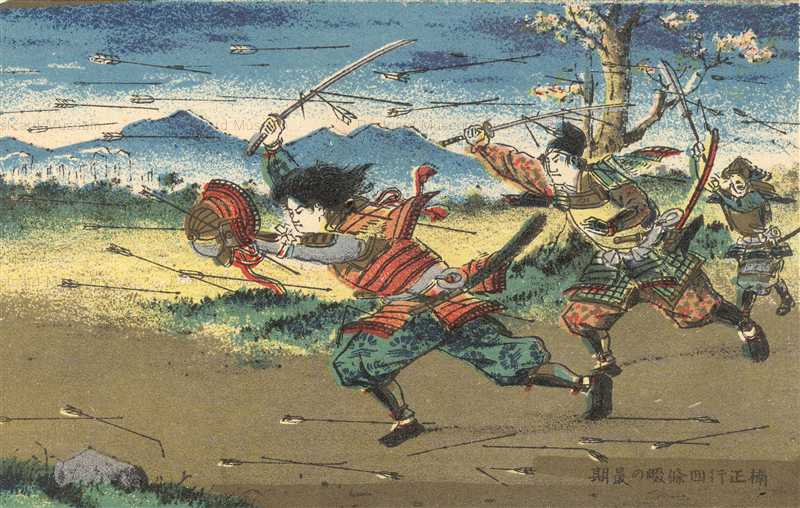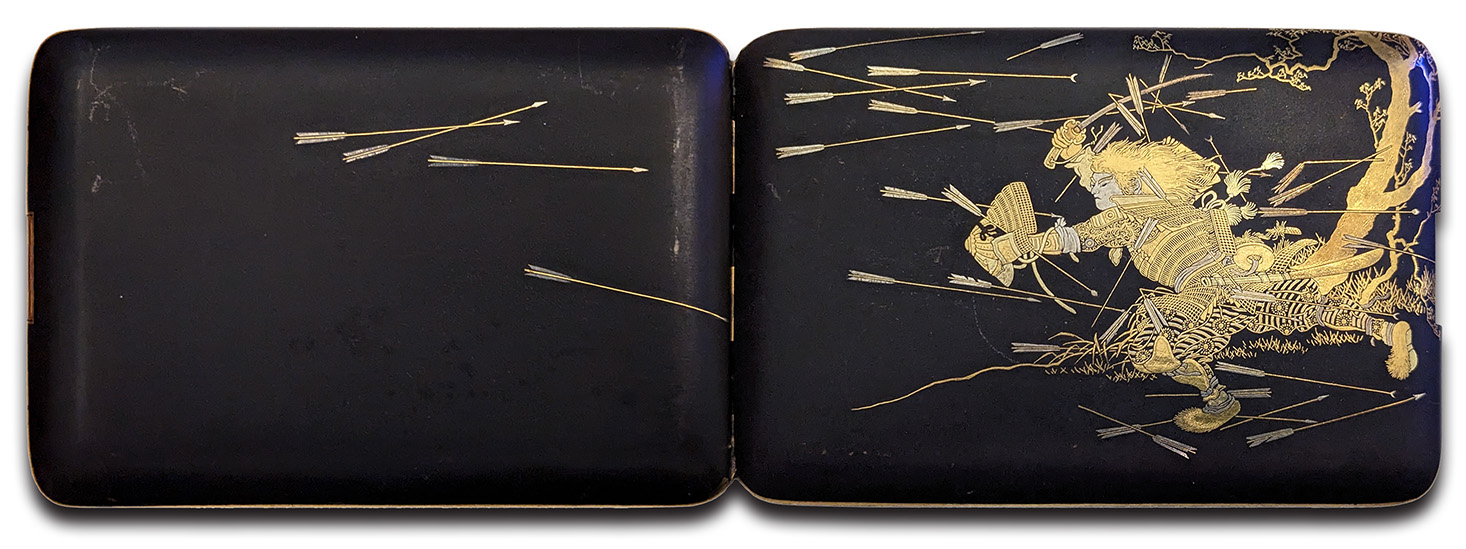


Kusunoki Masatsura (left) and Ko no Moronao (right), the military leaders of the Southern and Northern Courts during the Nanboku-cho period.


Top: A late Meiji period postcard showing the "The last stand of the Kusunoki at Shijonawate" (楠正行四條畷の最期). Bottom: a cigarette case from the O. Komai workshop (from Chris Penry's collection).
